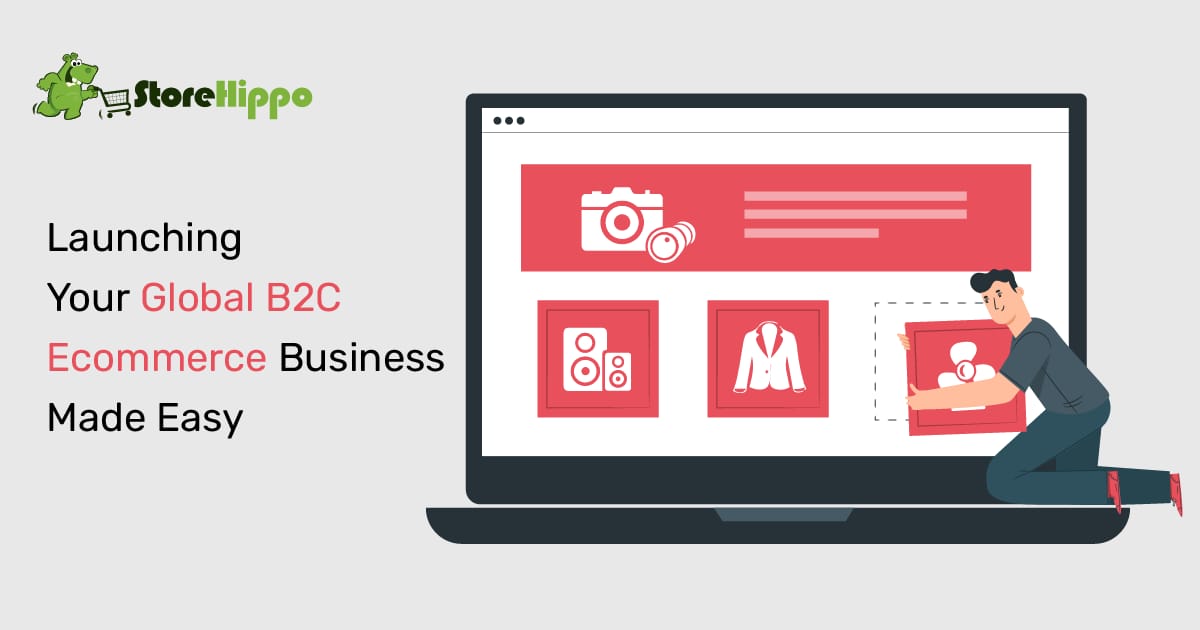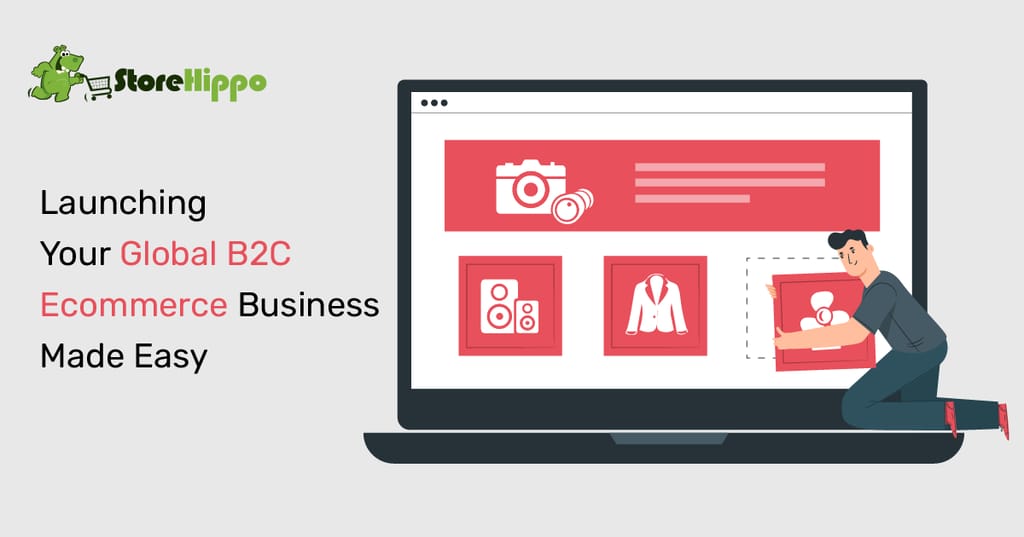B2C ecommerce business is growing tremendously and the sales from online transactions in 2023 are expected to exceed over $29 trillion. Cross-border online is also on the rise and cross-border e-Commerce is estimated to cross $1 Trillion in 2020.Considering this staggering amount, ecommerce retailers need to be on top of their game by exploring the global market.

If you have any doubts about whether you should sell in global markets or not, just look at the numbers and rethink your decision. By 2021, the global ecommerce sales will reach $4.47 trillion.
If you have not expanded into international markets, you are losing over billions of potential customers in the world. It is a right thing to say that every company wants to grow and growth can come from different sources. The increasing online buyers in the global market, broadened internet availability, political will and push and many other factors contribute to the global growth of B2C ecommerce business. No doubt, you need a solid plan and strategy to prepare for your international market entry.
Table of Contents
Important guidelines that you need to launch your B2C business in global markets and break into the market
1. Understand audience behavior
Just because everything is going online and ecommerce business is on hype, does mean that your online business is going to grow without any effort. You need to ensure that the market you are entering has strong potential for your business. The audience insights can be gained from the Google trends, behavioral campaigns or surveys, focus groups in the ecommerce industry. Don't be afraid of investing in top ecommerce platforms like StoreHippo, which provide a host of features to capture the relevant customer information and get better insights of customer demands.
2. Know your target market
Target market is a very important factor before entering into a new market. Gather market intelligence by looking at the data of product buying countries and expand the reach in the specific markets. Another option is to research about the demand for your product and match it with the local buying trends. It helps in analyzing the gap in the B2C market and understanding the spending pattern of consumers.
3. Pay attention to laws and regulations of the country
After evaluating the potential market, look at the external variables like laws and regulations, taxation, economic, and political environment. Some countries do not accept foreign business and make it challenging for businesses to enter the market. The key analysis factors include custom laws, tax laws, labor laws, free trade agreements, employee laws, corporate governance, product or raw material restrictions, etc.
Dealing in international B2C ecommerce business means dealing with a completely new set of rules. Once the geography is selected, it is important to look at the specific laws and regulations of the country. One of the best ways is to work with a reliable lawyer or local representative of that country and get complete information about local laws and business protocols.
4. Product quality assurance
It is another major concern while going international as the quality of products ensures consistent business. However, maintaining standard quality gets difficult when the company expands globally. For example, it is cheaper to partner with a local vendor located overseas but they might downgrade the quality due to low prices. And if the international customers receive a lower quality of products as compared to competitors, it will lead to negative reviews and hamper the brand reputation. Therefore, it is very important that your B2C business finds reliable partners across the globe and ensure good product quality.
5. Shipping and Return concerns
This is one of the most important concerns and it becomes even more important when you are selling internationally. Any service gap in this context directly impacts the brand image of the online business but there is a one-click shipping solution provides by top ecommerce platforms that can safeguard from any kind of logistics issue. Besides, some best shipping practices play a vital role while expanding in the global market.
Have an established return policy and make it visible on the website and consider the factors of returns, delivery timeline, return delivery fees, restocking charges etc. It should also cover the details about fee charges in case of product return, refund stipulations related to the issuance of store credit/cash/money transfer/card refunds, etc.
Secondly, a B2C business should always set clear expectations related to shipping because international shipping already takes a long time and higher cost. Giving the right estimates will help the customers take the right buying decision.
6. Preferred payment method of users
Like you look for flexible payment methods from the vendors, similarly think about customers as they also want to pay flexibly and verify the reputation of the payment provider. For this purpose, you should research extensively about the preferred payment method of local vendors as it varies significantly in different countries. Most of the customers prefer paying only their local currency and it is no more hassle. You can also allow customers to pay with their preferred currency with local payment gateways provided by top ecommerce platforms. It also provides multi-currency support, wallet support, customized checkout flow, automatic reconciliation and many other options to boost maximum conversions.
7. Market entry planning
Entering into the new market makes a huge difference for the business as well as the customers. There are various options for online businesses to enter into the international market that includes:
Entry with an existing online business – There are globally established marketplaces that allow you to enter into the global market at low costs. This option is good when you want to test your product demand in particular markets before investing a huge amount in the redevelopment and marketing of your B2C online store.
Optimization of an existing website – It surely requires major changes while optimizing the website for the international market. Some of the changes include highlighting the capability to accept global orders, adding products related to international demand, indicating the international shipping costs, listing the products with local currencies linked to IP address, etc. You also need to make your website multi-lingual to target the global customers in the language they love.
Customized website for specific markets – This is the most advanced option to build a customized website design to cater to the specific customers of the global market. These changes include local domain name, country-specific product strategies, pricing, and shipping according to the country. StoreHippo, top ecommerce platform provides excellent responsive ecommerce website themes to customize the user experiences.
8. Track progress
If your brand is new in the global market, it will not be an easy task to gain traction soon. B2C businesses need to track online traffic, sales, the conversion rate at regular intervals. These numbers certainly show the acceptance or non-acceptance of the brand in the market. Of course, it takes some time to get ranked on the search engine, attract customers, achieve good sales, and fantastic customer response but if things get stagnant for a long time, you need to understand the signs and take corrective actions. Well, tracking the data is easier with online selling and if one country is not for you, try another.
9. Slow and steady scaling
Fast expansion sounds good but the right strategy is to go slow with the global expansion. Simply, don't throw yourself in a country just for the sake of expanding your B2C business globally as there is a lot of money as well as brand name risk allied to it.
One of the most prominent keys to successful global expansion is extensive research and asking questions before entering into the market. Think and research well about the international expansion like getting the right products, matching the needs of customers, placing the products in the right market, pricing and distribution of the products, and consider these questions in context to existing laws and regulations of the country.
Conclusion
Don't wait for your better business growth
Going global with your B2C business is a great decision for online brands as it can expand your reach in many ways. But of course, it is necessary to do lots of research to find the right audience and target market, plan the right price and distribution strategy, manage laws and regulations and other important factors.
Invest in the top ecommerce platforms and focus on creating better customer experiences to gain new customers and maintain the existing ones. To learn more about expanding your business globally, read on the strategies to improve your B2C ecommerce marketing or Sign up for a Free Trial to explore one-stop ecommerce solution platform.





















Leave a Reply